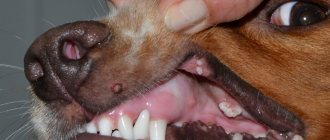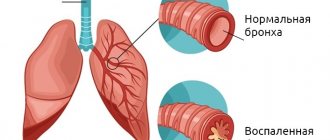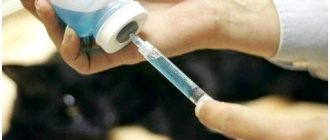A common disease that is incredibly disturbing and debilitating for an animal is itching in dogs. With such an illness, the pet becomes irritable, nervous, and, to some extent, even helpless. Itching appears in certain areas of the body, or in certain areas of the pet’s skin. By observing the dog, you can determine which part of the body is suffering the most: either the itching spreads over the ears and back, or the tail itches, or the itching settles in the back hole. There are many reasons why a pet may experience discomfort.
Causes and treatment of itching in dogs
Neither age nor breed play any role in this disease, since itching is a symptom of many diseases in the animal. There are many reasons that cause itching in dogs. One of the causes of itching is fleas and ticks.
Fleas are invisible on the animal. Flea saliva is a strong allergen for animals. A few bites of this insect are enough for your pet to begin to suffer from severe itching. Such parasites need to be gotten rid of urgently. To do this, it is necessary to treat the animal’s skin, as well as the bedding on which the pet rests, furniture and carpets. Disinfection must be complete.
In addition to fleas, itching in a dog can be caused by different types of mites, which are conveniently located on the animal’s body in places where there is no hair. These are the ears, stomach, elbow joints. The dangerous period for the appearance of ticks is from early spring to late autumn. It is in cool weather that they find their prey. A tick bite can lead to encephalitis. This disease is fatal for the animal.
First of all, you need to examine your pet. If you notice that he is focusing on scratching his ears, that may be where ear mites have taken up residence. The appearance of crusts in the ears or the appearance of a disgusting odor indicates that a mite has settled in the animal’s ears. This can lead to deafness in your pet. The scabies mite also causes severe itching.
Another reason is fungal diseases. Ringworm, which is what we are talking about, can become infected by any family member and animals living in the house where the sick dog lives. This disease can be cured:
- Antifungal drugs that cleanse the blood. They must be administered intravenously - these are handled by a veterinarian. As an analogue, you can use tablets or powder - in this case, the owner must monitor the intake of drugs, because Dogs often don’t really like the taste of the medicine, so it must first be disguised as a treat or food.
- Spots that appear on the dog’s body are outlined with iodine or brilliant green, depending on the type of disease.
- The dog is isolated because the disease is dangerous for people.
- Complete disinfection of the house is also necessary. It is important to treat not only things that belong to the pet, but also everything that it may have come into contact with. Pay special attention to the sofa, bed, etc.
A meeting with a veterinarian is essential in such cases. Before a diagnosis is made, research is carried out. In particular, scrapings and smears are taken from damaged tissues. Based on the examination results, the doctor prescribes treatment.
You can carry out treatment yourself only if the animal is found to have fleas. In this case, spray, shampoos, drops, and soap are used. Products are purchased at pet stores or at a veterinary pharmacy. After such treatment, for preventive purposes, the dog is put on a collar treated with a special anti-parasite compound. If your dog has suffered from ticks or fungal infections, it is better not to self-medicate, but to seek help from a doctor, because self-medication can lead to health problems for your pet or even its death.
How to determine food allergies in dogs?
Dogs often have food allergies, but they are not always food allergies. The fact is that food for doggies includes products that, in fact, should not be there. These could be preservatives, dyes, or some kind of flavoring additives or spices.
How to determine food allergies in dogs:
- If you notice that after purchasing a new food your dog has an allergy, then it must be excluded. The allergy does not develop instantly, but over 2 weeks. Therefore, after purchasing a new food, the next day there may be no allergy.
- In order to find out what product the dog is allergic to, it is necessary to completely change his diet, or rather introduce a new type of protein, replacing the old one. That is, if it was chicken before, then you need to replace it with duck or beef.
- For 5-8 weeks, you must adhere to this diet plan, completely eliminating chicken. After this, the dog is given chicken again for one or two weeks. After this, it is worth observing the results. If there really is an allergy to chicken protein, then the dog will again develop dermatitis and allergies.
Cute dog
Itching due to allergies in a dog
Dogs of any breed and any age are susceptible to allergies. The most common allergic reactions:
- Severe itching of various parts of the body, including the abdomen and ears.
- Rashes in the form of a small red rash.
- Bursting blisters and formation of pustules.
Food allergies cause very intense itching in dogs. There are a number of foods available today that can cause extreme itching in your dog. Therefore, when thinking over the menu, take into account the health characteristics of your pet. Unfortunately, the presence of allergies is determined strictly experimentally. All products that are introduced into your pet’s diet must be added gradually and in small portions. Only if there is no negative reaction, you can increase the portion and include it in the main menu.
However, there are the most allergenic foods for our four-legged friends. Even a small amount of chicken eggs can cause itching in an animal. When preparing dishes from beef and poultry, do not forget that they can also cause an allergic reaction. Be careful when introducing corn, wheat and other grains into your pet’s diet, especially those grown at home.
Products made from yeast dough can cause not only itching, but also gastrointestinal upset. After eating seafood, your four-legged friend may also develop itching. If your pet begins to itch continuously after eating cow's milk products, then this is the first sign that these products are strictly prohibited for him. Unbearable allergic itching may appear in an animal after eating soy or products containing it.
Smoked meats, sweets, and very salty foods are unacceptable as dog food. Be careful when buying ready-made food for your pet. Check out the ingredients. Store purchases can also cause complications in the form of itching in the animal.
It is necessary to check the blood for the presence of allergens in the pet’s body. Based on the result of the analysis, the veterinarian will be able to adjust the composition of food for your pet. The products recommended by the doctor are used for two or three months. The owner monitors the health of his four-legged friend. It may very well be that the diet will have to be adjusted in order to finally get rid of the itching.
Only under the supervision of a doctor can you organize proper nutrition and help your dog recover. With an established diet, after a certain time, changes can be gradually introduced into the animal’s diet. At the same time, make sure that the itching does not recur. Corrections in nutrition are carried out only by a doctor - no arbitrariness if you value the life of your pet.
Possible reasons why your dog is itching
Most Common Causes of Itching in Dogs
:
The most common reason why a dog often scratches its ears is inflammation of one or both ears (otitis media). It is called:
The veterinarian's task is not only to make a diagnosis, but also to determine the factor that caused the itching. After the inspection and interview of the owner, additional studies may be prescribed:
- Bacterial seeding of material from lesion sites.
- Microscopy of skin scraping.
- Cytological and histological examination.
- Diagnostic diet - the animal’s diet for several weeks is made up only of foods that have not previously been consumed. If the itching disappears and returns with a return to the original diet, then the allergen is contained in the food. It is found by elimination, gradually removing one component from the diet.
- Trichoscopy.
- Conducting an allergy test for the suspected allergen.
Symptoms of the disease
Naturally, the first sign of illness in a four-legged friend is pronounced itching.
- At the same time, the pet diligently reaches its ear with its hind paw and diligently combs it.
- He clicks his teeth furiously at the anus.
- To soothe the itching, the dog diligently rubs itself against carpets or sofas.
- Quite often he shakes his ears, rubs his eyes and muzzle, and squeals at the same time.
- It happens that due to unbearable itching, the dog scratches the skin until it wounds and even whines at the same time.
- Depending on the affected area of the skin, the pet scratches the ears, nose, belly and other areas of the body.
- Diligently licks its paws. When itching, the skin in the affected areas turns red.
- Dandruff may even appear.
Signs of Hypothyroidism in Dogs
All three of these diseases share a similar picture. Often owners do not pay attention to increased thirst and appetite, or the animal’s fatness (saggy belly or severe obesity).
And the first thing the owner notices is the balding areas of the skin. They may be symmetrical, not symmetrical, or the animal may be left without hair at all.
In any case, you will need the help of a specialist.
Endocrine diseases are serious illnesses with serious consequences.
What does the owner see? While the disease progresses in the body, the pet owner may observe increased thirst and appetite of the animal, more frequent urination, a rounded, saggy belly, as well as symmetrical alopecia (hairless areas), skin pigmentation (darker areas).
Antipruritic drugs for dogs
The extent to which the patient is quickly and accurately diagnosed, the treatment is effective and the recovery is long-awaited. If the animal suffers from very severe itching and skin lesions are clearly visible, then treatment is carried out:
- hydrocortisone;
- prednisone;
- cortisone;
- dexamethasone.
In the next four hours after administration, the drugs begin to act and the pet’s itching gradually decreases and disappears. For twelve hours after administration of the medicine, your four-legged friend does not suffer from unbearable itching. These medications can only be used for seven days. And only in case of emergency, as they have serious side effects. Antihistamines should be used when it becomes clear that your pet’s severe itching is caused by an allergy.
For treatment, two or more antihistamines are prescribed at once. Their reception is designed for fourteen days. If your pet sleeps more while taking these medications, don't be alarmed. This is one of the symptoms of the medicine. Diazolin, tavegil, suprastin, diphenhydramine can calm the animal's nervous state and reduce the unpleasant sensation of itching. To treat affected skin, mash and decoctions are used.
In case of allergic itching, more of the following should be added to the diet of a sick animal:
- fatty acids;
- fish fat;
- flaxseed oil (by the way, they can be given with food; they are available in capsules).
Medicated shampoos and soaps are used to treat affected skin. They destroy fungal and bacterial infections. They are based on coal tar. Talkers with the addition of sulfur are widely used. Applications and even herbal baths are also used. For such diseases use:
- oats;
- strawberry leaves and roots;
- oak bark;
- sequence;
- young birch leaves.
Adviсe
The most common cause of itching in your pet is fleas. Their presence cannot be tolerated. The room in which the dog lives must be treated at least three times. During treatment, you can simultaneously use drops that drip onto the withers, plus an anti-flea collar. You can use drops and spray in pairs. The medications contain substances that repel and kill fleas.
- After each walk, be sure to carefully examine your pet. Pay special attention to the groin, abdominal skin, ears, even gums.
- Check your dog to see if he has ringworm or scabies mites. Both diseases are contagious to humans. In case of such diseases in animals, the owner and his family members must strictly adhere to strict hygiene rules.
- Make notes to yourself indicating when and after the animal began to itch. This information will be useful when visiting a doctor to make a correct diagnosis.
- To obtain a 100% recovery result for your pet, use two or three medications for treatment.
- Don't give your dog a completely short haircut. Just cut the hair in a specific sore spot.
- If your dog's itchy skin is caused by an allergy, then first of all identify this allergen and try to get rid of it. Reconsider your relationship with food. In a dog's menu, proteins should prevail over carbohydrates.
- It is necessary to ensure that there is a sufficient amount of fatty acids in the animal’s diet, as they help improve coat growth, as well as its beauty.
- Detergents, shampoos, and various herbal scents can cause itching in dogs. Medicines can also be allergens, as they have side effects.
To bathe an animal suffering from itching, use a gentle, mild shampoo. This shampoo relieves some of the pain and itching. When choosing a detergent for your dog, it is better to consult a specialist. The dog is bathed once every month. Before you get rid of itching in your dog, make sure you know the exact cause of it. To do this, visit your veterinarian.
Unfortunately, pets are susceptible to many diseases, including allergies.
This disease occurs quite often, and antihistamines for dogs will help to cope with it.
Causes
The first point in drawing up an anamnesis is the presence of parasites . You need to say when the dog was last treated for fleas and ticks. Since prevention does not guarantee, the doctor will definitely examine the four-legged skin for bites, waste products and fleas themselves. Red dots are bite marks, clearly visible on the stomach, where there is no fur. Flea scratches can appear all over the body, in the form of scratches on the sides and neck, in the form of weeping wounds above the tail and on the thighs.
Note! An allergy to flea saliva develops with each subsequent bite - this causes local itching. Dogs with sensitive skin may experience generalized itching even with a few bites.
A common cause of localized itching is mites that parasitize the skin. When infected with ear mites, the dog scratches its head and ears within just a few days. The subcutaneous mite can cause numerous bald patches throughout the body. To confirm or refute the diagnosis, a skin scraping is taken from the dog. The study determines not only the presence of parasites, but also their type. The fact is that lice are much smaller than fleas, and lice eaters are not at all possible to see without the appropriate equipment. Treatment, or more precisely, its effectiveness depends on the spectrum of action of the drugs - medicine for ticks will not help against lice and vice versa.
In a similar research method, the affected areas of the skin are checked for the presence of fungal cultures. All kinds of lichen are the result of a riot of unfriendly microorganisms that have found favorable conditions for reproduction. Fungi and even a microscopic mite that causes demodicosis constantly live on the body of a healthy dog. As long as the animal is healthy and its immunity is functioning normally, there is no need to worry about microsporia or demodicosis. If feeding is improper, after an illness or major surgery, the level of immune protection may drop. The sudden appearance of multiple foci of inflammation and scratching does not indicate itching, but some kind of extensive illness.
Note! Dogs often suffer from demodicosis. The disease progresses quickly, but begins with small bald patches and scratching.
The causes of generalized or partially localized itching are more varied, but are most often associated with allergies. Any dog, even the pickiest one, can develop an allergic reaction to food. This reason is especially likely if the animal eats cheap dry food, which is generously flavored with dyes, preservatives and flavor enhancers. Diagnosis of food allergies is based on a detailed medical history and a temporarily introduced strict diet. To quickly eliminate an acute condition, antihistamine therapy is used.
After 2–3 days, the dog’s diet begins to be supplemented with familiar foods. After each innovation, the condition of the four-legged animal is observed for 3–4 days. If the dog is not bothered and the scratches continue to heal, the next product is introduced. In difficult cases or when the owner does not have time for observation, the dog is immediately switched to high-quality hypoallergenic industrial food.
Important! Redness, scratching and hot spots are common symptoms for allergies to flea saliva, food, tick infestation and other ailments. For effective treatment, you need to correctly determine the cause and often this has to be done through trial and error.
A more complex option is non-food allergies. The difficulty is that determining the source of allergens is very difficult. The first step is to replace all bowls, anti-parasitic collar, bed, toys and other accessories that are in constant contact with the pet. All recently purchased bathing accessories and products are removed from use. Until the acute condition is completely eliminated, the animal should receive complex antihistamine therapy.
Note! By analogy with human medicine, conducting allergy tests in a dog is irrelevant until the primary reaction to the allergen is eliminated. At a time when the allergic reaction is rampant and the dog is constantly itching, there is a high probability of obtaining false positive results for many groups of allergens.
Seasonal allergies to pollen, spores and dust are also classified as non-food allergies. It is impossible to completely stop the dog’s body’s reaction to the external environment, so the doctor prescribes seasonal therapy. Long-term use of antihistamines is not addictive, but may have a detrimental effect on effectiveness. The drugs are either alternated or prescribed in courses. During seasonal allergies, it is advisable to keep the dog on a diet and not resort to bathing with shampoos unless absolutely necessary.
Atopic dermatitis is another cause of severe itching and scratching, the problem is that it cannot be cured. Atopy has no established causes; it arises abruptly and most often also goes away unexpectedly. Naturally, the pet’s condition cannot be ignored; taking antihistamines and treating scratches is carried out throughout the entire acute period.
Note! Self-medication is always risky, but if there is no other choice, you can give the dog diazolin, loratadine or suprastin - it partially relieves the itching, and treat the scratches with levomekol or panthenol.
June 08, 2018
in Blog, pathology
General signs of allergies
The allergy is not immediately noticed, since a common symptom for all types of such reactions is inflammation and redness of the skin, which is not easy to detect under the fur. The pet itself will not tell you about the itching, which also accompanies any allergy.
To detect the disease at an early stage, preventive examinations of the pet are carried out periodically. Choosing the right antihistamines for dogs is only possible with a careful analysis of the cause and type of allergy.
Varieties and pathogens
A large number of factors can provoke an allergic reaction.
The following types of allergies are distinguished:
1. Food allergies
Provokes the development of a reaction:
Allergens are also foods that are strictly prohibited from feeding a dog in principle: fried foods, smoked meats, spices, salt, sugar and chocolate.
Signs of food allergies:
- severe itching (the animal scratches areas of the body for a long time and furiously);
- redness, roughness and poor moisture of the skin;
- a pungent odor from the dog itself and from the open mouth (sometimes sores and sores can be seen on the gums and lips);
- sweating, which is not typical for a healthy dog (wet areas are found on the body);
- loss of clumps of hair and the appearance of baldness - bare areas (however, hair loss may indicate the presence of more serious diseases);
- white particles all over the body - dandruff - a clear sign;
- discharge from the ears (the pet shakes its head, scratches its ears);
- tearfulness.
2. Skin allergies
This type of disease occurs as a result of an atypical reaction of the dog’s immune system to external irritants and substances ingested.
The main factors contributing to the development of allergic dermatitis are:
- dust;
- synthetic fabrics (clothing, carpets);
- the fur of other pets or your own;
- medicines;
- household products or cosmetics;
- shampoo, soap;
- pollen.
Preparations for dogs of small breeds and adults
Antihistamines are used to relieve allergy attacks. Second- and third-generation medications, as well as the first-generation drug Diazolin, are the optimal antihistamines for small breed dogs, such as Yorkies. They will reduce the possibility of side effects such as urinary problems, changes in heart function, and anxiety.
Second and third generation medications are more advanced than the first and are considered relatively safe drugs that have been used for a long time.
Antihistamines for dogs - the list for adults is headed by Suprastin, which stops the development of symptoms.
Also used are products originally intended for people: Diphenhydramine, Tavegil and others. When affecting an animal, antihistamines for dogs do not always produce the desired effect; sometimes they cause side effects, so it is highly advisable to seek advice from a veterinarian.
Antihistamines for dogs: the dosage depends on the weight of the pet and is calculated per kilogram.
Under no circumstances should you treat yourself without seeking help from a veterinarian!
Only a doctor determines the type of disease and prescribes medications. Self-medication can lead to dire consequences.
How to use the drugs?
The appropriate drug for treatment is determined based on the purpose of use, the weight of the animal, breed, health status and developed signs. Testing for effectiveness is carried out over two weeks. If there is no improvement during this time, another drug is prescribed.
A dosage that can relieve allergies is prescribed by a veterinarian.
If any health problems arise, conscientious owners contact a veterinarian to find out the exact cause of the disease and proper treatment. Allergies are no exception.
Additionally, watch the video about the manifestation and treatment of allergies in dogs:
Most pets can suffer from allergic reactions. It is very difficult to identify the cause of the disease on your own at home, so you should contact a veterinarian. In the clinic, the dog is examined by a doctor and undergoes tests. After establishing the cause, the doctor will necessarily prescribe antihistamines for dogs. These are medications that will allow your friend to get rid of unpleasant sensations, and also bring his health back to normal.
Mechanism of action of antiallergic drugs
Antiallergic drugs for dogs have their own specific effects on the body. The mechanism of action of drugs is based on their ability to reverse inhibition based on histamine receptors.
They do not replace histamine, but they do help block receptors that are not occupied by it for whatever reason. Therefore, drugs are used in situations where it is necessary to prevent an allergic reaction.
The mechanism of action of antiallergic drugs may be weakened due to the obstruction of new batches of histamine in a situation where the disease begins to actively develop. However, modern drugs aimed at suppressing the reaction can affect histamine, serotonin, and leukotrienes.
Dog allergy injections
The best way to combat signs of allergies is by injection, which is administered subcutaneously to the dog. Such anti-allergy drugs quickly enter the bloodstream and eliminate the cause of the disease.
True, only a veterinarian has the right to prescribe this method of treatment, based on the following data:
- examination results;
- laboratory research;
- stories from the owners.
The following names are most often used in veterinary practice.
Allervet
Main active ingredient: diphenhydramine. It is the main antiallergic agent. The mechanism of action involves blocking histamine receptors. Histamine is deprived of its application points.
The product can also be used for prophylactic purposes.
The drug reduces the body's response to existing histamine, relieves muscle spasms, reduces the permeability and excitability of capillaries. Designed for small pets or farm animals.
Most often used at the time of manifestation of anaphylaxis, muscular rheumatism, articular rheumatism, as a prevention of vomiting, for diseases of the nervous system, for diseases of the genitourinary tract. The drug is used intramuscularly. Dosage from 0.2 - 0.4 mg per cm3 per 1 kg of weight. Frequency of use up to 4 times a day.
The period of taking the drug is up to 5 days, until the symptoms go away.
Hifenadine
The active ingredient is Hifenadine. The drug is presented as a white cross-shaped powder, which has a bitter taste and is odorless. Slightly soluble in alcohol or water. Blocks histamine receptors. Affects the activation of histamine.
Reduces the amount of mediator in muscle tissue. Relieves spasms on smooth muscles in the intestines. Has a hypotensive effect.
Prescribed when:
Animals under 3 years old: 5 mg 2 times a day. For older animals up to three times a day. The dose is prescribed by the veterinarian. During treatment, care must be taken, as sometimes the treatment is accompanied by dizziness. The course lasts up to 7 days, after which the use of the drug is reduced to zero.
Pills
Diazolin
The histamine receptor blocker has an antiallergic effect. Reduces swelling of the mucous membranes. The therapeutic effect appears 30 minutes after use.
It is used for the prevention and treatment of rhinitis, urticaria, angioedema, skin itching, eczema, conjunctivitis and so on.
For small breed dogs, 50 mg is prescribed 2 times a day. For large breed dogs, 50 mg up to 3 times a day. Available in tablet form.
The course lasts up to 7 calendar days. It has good effectiveness, so it is often used in veterinary practice.
Claritin
Main active ingredient: Loratadine. Excipients:
- propylene glycol;
- glycerol;
- lemon acid.
Presented in the form of a clear syrup. The active substance Loratadine is a compound with an antihistamine effect.
Acts as a selective blocker for histamine receptors. Long-term antiallergic effect. Does not affect the central nervous system. Well absorbed from the gastrointestinal tract.
It is used for seasonal or year-round allergic exacerbations, rhinitis and conjunctivitis. With enlargement of the nasal mucosa, burning and lacrimation. Used internally, regardless of the time of meal. Prescribed depending on the body weight of the animal.
If your body weight is less than 8 kg, 5 mg per day is prescribed. More than 8 kg - 10 mg per day. The course lasts up to 5 days as prescribed by the doctor.
Cetirizine
Active ingredient: chlorophenyl. The addition is acetic acid.
It is prescribed for pronounced allergic reactions, psoriasis, swelling of the mucous membrane, frequent sneezing, and so on. It is used in a dosage of 5 to 60 mg, depending on the weight and age of the animal.
It is eliminated from the body in approximately 10 hours. It can be used as a prophylaxis in small dosages to alleviate the symptoms of year-round rhinitis.
Use the products for 5 days as prescribed by your doctor.
Suprastin
Active substance: chloropyramine hydrochloride.
Excipients: stearic acid and gelatin. This is an analogue of a classic antihistamine. It blocks histamine receptors and has a corresponding effect.
It has an antiemetic effect, as well as antispasmodic activity. It is administered orally.
It is used in the dosage specified by the doctor. Adults are prescribed from 75 milligrams per day. Young individuals are prescribed up to 50 mg per day.
The course of admission is no longer than 5 days.
Tavegil
Active substance: clemastine fumarate. Has antipruritic and antiallergic effects.
Used at 2 mg per day. Presented as a solution for intramuscular and intravenous administration.
Storage should be in a protected place. It has an antihistamine effect, reduces inflammation, spasms, pain, and itching.
The course of taking the drug is up to 7 days.
Desloratadine
Active ingredient: desloratadine.
Additional: chlorine and dihydrobenzopyridine.
Presented as a white powder that is slightly soluble in water. Blocks peripheral histamine receptors. Suppresses a whole cascade of cytological reactions.
The drug is used in a dosage of 0.5 to 20 mg, depending on the weight and age of the animal.
On average, when taking the minimum dosage, the drug can be used for up to 2 calendar weeks. If during this time there is no improvement in allergic reactions, an urgent visit to a doctor is required.
Levocetirizine
The active ingredients are levocetirizine, phenyl, methyl and acetic acid.
The formula has a geological antiallergic effect. Levocetirizine is a competitive antagonist for histamine. It blocks its receptors and affects the stage of the allergic reaction, which is considered to be histamine-dependent.
It can prevent the development of allergic reactions and also facilitate their course. It is recommended to use the drug for 5 days.
To take the tablets, it is recommended to dissolve them in water and give the animal in small quantities. So, about 50 mg tablets should be dissolved in 2 ml of water. This dosage is suitable for medium-sized animals. Only a veterinarian will determine the exact dosage, based on the symptoms and performance of the animal.
What can you give your dog for allergic itching: list of medications
Almost the same antihistamines are used as in humans, the dosage is different.
What can you give your dog for allergic itching, list of medications:
- Diazolin. This is a second generation drug, it is not the best option, it is used mainly among toy breeds, as well as in mature individuals. It must be given according to the dosage indicated for children.
- Suprastin . This is one of the most inexpensive remedies that begins to work 30 minutes after administration. Can be given as an injection or given in tablets. On average, 2 mg is enough per 1 kg of weight. This is the maximum dose that can be taken per day.
- Diphenhydramine. This drug did not work very well, since it is useless to give it for acute manifestations of allergies. It is usually administered as a prophylaxis during vaccination.
- Tavegil. Often practiced by veterinarians, it is well suited for dogs of large weight. One tablet per day is enough for a dog that weighs 60 kg. If the pet is a little smaller, the tablet is simply divided into parts.
- Desloratadine . It is a derivative of loratadine, but an improved version of it. Therefore, the drug is more effective and has fewer contraindications than loratadine.
- Fenkarol . The drug is often used in veterinary medicine, but if the dog has diseases of the cardiovascular system, then the drug should be replaced with another.
The pet is sick
Many owners are surprised when their dog is allergic to chicken or eggs, foods that were part of the dog’s daily diet. Indeed, this happens, the body malfunctions, and reactions may occur that were not observed before.
Antihistamine drops
If the dog cannot take tablets in one form or another, they can be successfully replaced with drops. There are many advantages to using such drugs.
- Can be easily mixed with water or just quickly poured into the animal's mouth.
- They begin to act faster, which means their work is more effective.
The dosage of substances in drops is higher than in tablets, so it is important not to overdo it in an effort to cure your pet.
Zodak
The active substance of cetirizine hydrochloride. Excipients: acetic acid, purified water, propylene glycol, sodium acetate trihydrate. Belongs to the group of competitive histamine antagonists. Blocks receptors.
Prevents the development of a reaction. Improves tolerance of allergy symptoms.
It is prescribed at a dose of 0.25 mg per 1 kg of animal weight. More detailed recommendations will be made by the attending veterinarian. The drug is used over a 7-day course.
Zyrtec
The active substance is cetirizine dihydrochloride. Excipients: lactose monohydrate, silicon dioxide, magnesium stearate.
White oblong tablets, before use it is better to dissolve in water or distribute in food. Facilitates the course of an allergic reaction. Has an antipruritic effect. Used for urticaria, fever, year-round or seasonal allergies.
Dosage is approximately 10 mg per day. If Zyrtec is used in the form of drops, then 5 drops once a day. Used for 7 days.
Allergy ointments
Another effective remedy for allergies are special ointments. They will save you from itching, relieve discomfort and the desire to scratch your skin. Indeed, very often, to escape the reaction, the animal simply tears apart the upper layer of the epidermis, as a result of which harmful substances enter the bloodstream, which can cause various diseases, including blood poisoning.
Fenistil
The active substance is dimethindene maleate. Excipients: sodium hydrogen phosphate, citric acid monohydrate, benzoic acid. Looks like a colorless, odorless, transparent liquid.
It has an antipruritic, antiallergic effect. It is used to relieve allergy symptoms for animals. Use until the pain symptom is eliminated.
Levomekol
Active substance: methyluracil and chloramphenicol.
The drug is used externally and has an antimicrobial and anti-inflammatory local effect. As a rule, gauze napkins are impregnated with levomekol, and the imp is already filled with wounds or lesions.
It is used until the pain symptom is eliminated.
Flucinar
The active substance is fluocinolone acetonide. Excipients: citric acid, lanolin, white petrolatum. Sold in the form of a gel or ointment.
It is used for severe inflammatory and allergic skin diseases, as well as for damage to the mucous membranes.
It is used externally, applied to the affected surface. Rub lightly. If the patient has psoriasis, you can also apply a bandage. The duration of the course cannot exceed 2 weeks.
If your pet suffers from allergies for one reason or another, there is no need to wait for the disease to go away on its own. Animals experience maximum pain from unpleasant sensations, so it must be prevented. Your doctor will prescribe medications for you, but now you have an idea of what effect they can have. At this stage, it is important to listen to the opinion of a specialist and then the animal will quickly recover











